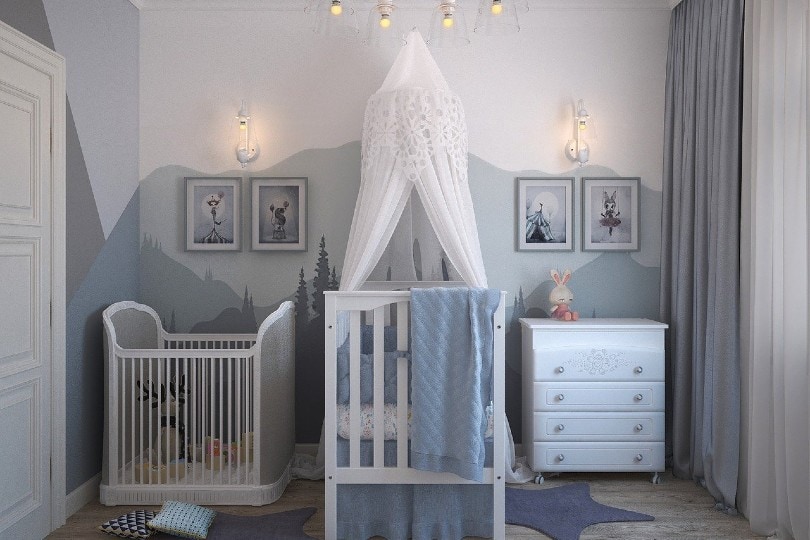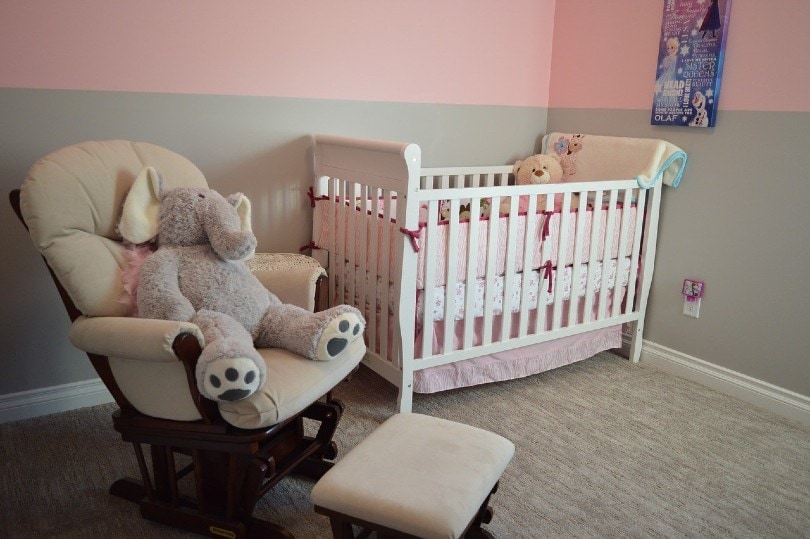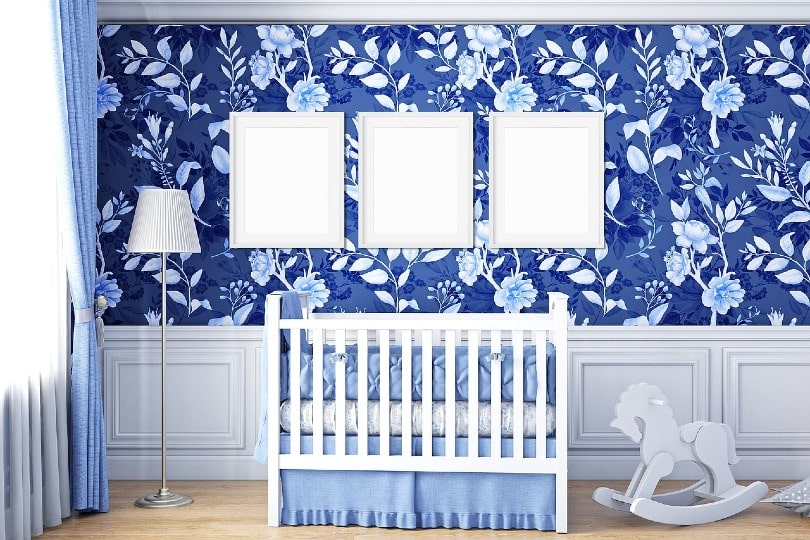What’s the Ideal Humidity Level for a Baby’s Room? (2025 Guide)
-
Pete Ortiz
- Last updated:

Sleep is important to all of us but is especially important to babies who need their sleep to recover and develop. While most parents look at factors like temperature and even how long before bedtime they feed their children, one often-overlooked factor that can play an important role in sleep quality and length is the humidity of a baby’s room.
The Environmental Protection Agency (EPA) recommends that a room be between 30% and 50% humidity and should never go above 60%. It is recommended that parents target a humidity level of 50% so that the room is comfortable and so that bacteria and other pests are not allowed free rein.
Read on for more information on ideal humidity levels for a baby’s room, including how to determine current levels and what to do to meet the ideal range.
Normal Humidity Levels
Humidity is the amount of moisture in the air, and it is affected by the temperature, weather conditions, and things like heating and air conditioning use. Humidity levels also change dramatically over a day. Humidity levels can be as much as 100% higher than in the afternoon. Night-time humidity can be very high in some parts of the country.
Condensation on windows is a possible sign of high humidity, while the formation of mold and mildew is another good indication, but to get an accurate and reliable reading, you should consider having a hygrometer in your baby’s room.
Both low and high humidity can cause health problems for babies. Low humidity means that the air is especially dry, and this can lead to skin irritations, eczema, sore eyes, and even dehydration, and respiratory issues. High humidity can cause lethargy and may result in hyperthermia and overheating.

Normal Humidity Levels in Winter
In winter, humidity levels are lower, and indoor humidity can drop to around 30%. Although 30% is still considered an acceptable level, if your levels drop much lower, they could cause negative side effects for your baby, and in some areas, humidity levels can drop even lower.
Normal Humidity Levels in Spring
Although it depends on where you live and whether you have air conditioning or heating on in spring, this time of year will usually see ideal humidity levels between 40% and 50%. However, if you have a particularly hot spring, you will need to reduce humidity.
Normal Humidity Levels in Summer
Warm air naturally contains more moisture, which means that you can expect higher humidity levels during summer. Humidity levels at this time can reach 55% and may creep higher. Considering the ideal level is 50%, you may need to take some remedial steps to help draw moisture out of the air and provide a more comfortable environment.
Normal Humidity Levels in Fall
Fall tends to be a damp season and humidity rises because of the evaporation of the rain. This is especially true if you suffer a prolonged and especially wet fall. As such, it can prove a challenge to bring humidity levels down at a time of year when it may still be cold, and the heating system needs to be turned on.
What Causes High and Low Humidity?
Humidity is the amount of water or moisture in the air. The moisture is caused by the evaporation of water. Outside, the hot sun causes standing water, water in the atmosphere, and even the water in plants and other objects to evaporate and the moist molecules are effectively held in the air. Indoors, humidity can rise as a result of heating systems, causing a similar effect on the moisture in your home. Air conditioning, on the other hand, causes temperatures to drop and reduces relative humidity levels.
High humidity means that the air contains a lot of water molecules, while low humidity means that the air is dry. Warm air is capable of holding more moisture than cold air, which is why it gets more humid in summer. Even when cold air is fully saturated, it still holds less moisture than warm air that is not fully saturated.

How to Increase or Decrease Humidity Levels
The first step to ensuring a suitable humidity level is to measure the relative humidity in the air. You can look for signs of high or low humidity in rooms, but a hygrometer, which is a relatively inexpensive and simple device, can be used to get an accurate measurement. Once you know the humidity level of a room, you can use the following methods to increase or reduce the level as required.
The 4 Ways to Increase Humidity
1. Use a Humidifier
Most of us have heard of dehumidifiers, but humidifiers add moisture to the air essentially by running the air in a room through a moist filter, directly adding moisture to the air.
2. Add Houseplants
Houseplants have many benefits. They brighten up a room, can improve mental health, and increase humidity through evapotranspiration where water is transported through the plants and into the leaves where it is evaporated into the air.
3. Shower
Hot showers produce a lot of steam, which is essentially moist air. When you shower, leave the bathroom door open to allow the moist air to be transported through the house, thereby increasing relative humidity levels.
4. Put Bowls of Water Near the Heating Fan
If you have the heating system on, put bowls of water in front of the heater or the heating fan. The warmth of the heater will evaporate the water and the fan will disperse the humid air.
The 4 Ways to Decrease Humidity
1. Use Your Air Con
Air conditioners reduce air temperature, and because cooler air is unable to hold as much moisture as warm air, it causes a drop in humidity levels.
2. Use a Dehumidifier
Dehumidifiers perform a similar function to the air conditioning unit in that they cool air to remove moisture particles, but they can do so without causing a large drop in room temperature.
3. Fix Leaks
If you have leaking pipes or your windows and doors leak and allow moisture into the house, this moisture is taken up in the air and increases humidity. Fixing leaking pipes and ensuring that there are no gaps in windows and doors will reduce the moisture in the air.
4. Dry Laundry Outdoors
Drying laundry on heaters and radiators causes a lot of moisture to evaporate into the air. Where possible, dry clothes outdoors or, if this isn’t possible, dry them in a single room with the door closed and windows open.

Air Conditioner vs. Dehumidifier
Air conditioners and dehumidifiers can both be used to decrease relative humidity. However, dehumidifiers do not usually reduce the temperature of the room to the same extent as an air conditioner will, and dehumidifiers tend to be less expensive than air conditioners. They also use less electricity but do not offer the same levels of control and they are not usually as powerful or as effective as an air conditioner.
FAQs On The Ideal Humidity Level for a Baby Rooms
Can a Baby’s Room Be Too Humid?
Generally, it’s recommended that a baby’s room have a humidity level of around 50%, and most experts agree that levels should not exceed 60%. If a room is too humid, it can cause sleepless nights and may even lead to coughing, respiratory problems, and dehydration.
Is It OK to Have a Humidifier on All Night for a Baby?
It should be safe to leave a humidifier running all night in any location, including in a baby’s bedroom. Doing so can help ensure a better night’s sleep for your baby and help prevent irritation caused by low humidity.
How Far Should a Humidifier Be From a Sleeping Baby?
Humidifiers do emit moisture, especially immediately around the humidifier unit. As such, it is recommended that the unit be placed at least three feet away from a sleeping baby to avoid exposure.
Conclusion
Too low or too high of humidity levels can cause sleepless nights for your baby, and if the levels are too excessive in either direction and for too long a period, it can lead to reactions ranging from dry skin to respiratory problems. Aim for a humidity level of 50% and use your heating and air conditioning units, as well as windows and other techniques, to achieve these ideal levels.
- https://www.askdrsears.com/news/sears-family-blog/correct-humidity-level/
- https://www.weatherstationadvisor.com/ideal-humidity-for-baby
- https://goblueox.com/blog/what-is-humidity-and-why-does-it-matter
- https://www.smartfog.com/how-rain-and-humidity-connected.html
- https://aircareheatingandairllc.com/indoor-humidity-winter-vs-summer
- https://www.inchbyinchinspections.com/blog/what-ideal-household-humidity-levels
- https://atlascare.ca/blog/the-effects-of-humidity-on-your-health
- https://www.currentresults.com/Weather/US/annual-average-humidity-by-state.php
- https://www.babysleepscience.com/single-post/2019/01/22/its-winter-do-you-need-a-humidifier-in-your-childs-room
- https://www.weatherstationadvisor.com/best-ways-to-increase-humidity-in-your-home/
- https://www.huskyair.com/blog/reducing-indoor-humidity/
Featured Image Credit By: Victoria_Borodinova, Pixabay
Contents


